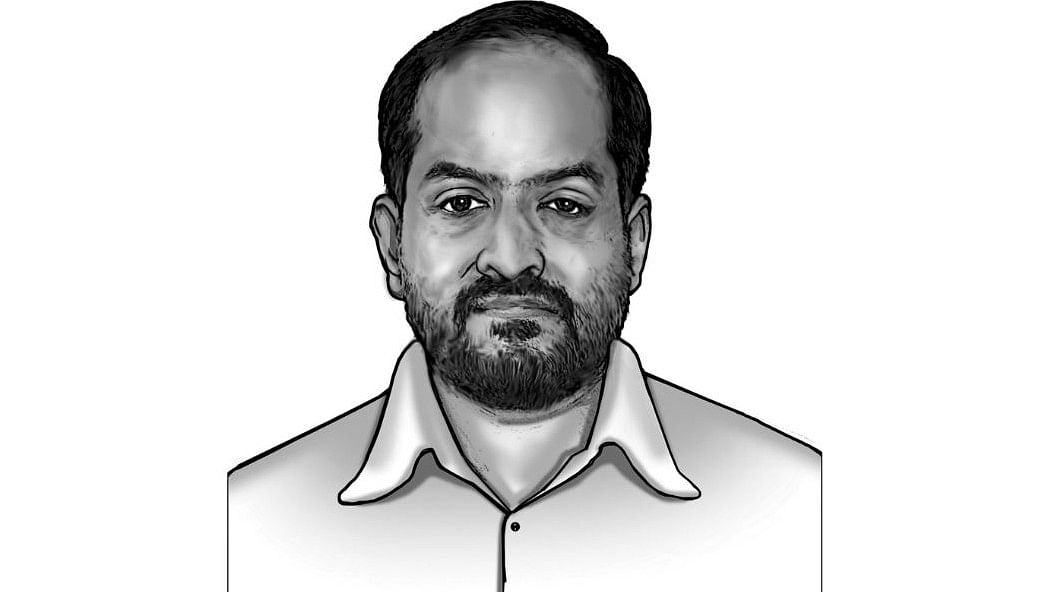
Venkatesh Nayakwakes up every morning thinking someone somewhere is hiding something
Credit: DH Illustration
Less than a month ago, while disposing off a batch of petitions seeking reform of the current methodology of counting votes cast through electronic voting machines (EVMs), the Supreme Court observed, “repeated and persistent doubts and despair, even without supporting evidence, can have the contrarian impact of creating distrust…This can reduce citizen participation and confidence in elections, essential for a healthy and robust democracy”, implying that we should trust the Election Commission’s (EC) procedures and practices.
Barely had the ink dried on this ruling, the Election Commission scored an own goal over the issue of publishing voter turn-out figures. Instead of continuing the time-honoured practice of publishing the absolute numbers of men, women and transgenders who had voted, the EC has been publishing only constituency-wise polling percentages this time. This reluctance to disclose citizen participation data, when the technology exists to make it accessible in real-time, does not exactly bolster ‘trust’ in the EC.
It is not as if there is a law which requires voter turn-out figures to be locked up as sarkari secrets. Indeed the principle of free and fair election is the exact opposite: for the EC to put out all that data without having to be asked, much less dragged to court for it. The Presiding Officer of every polling station has a statutory obligation to enter voter turn-out figures in Part-I of Form 17C as soon as polling ends. Copies of it must be given to the polling agents of all candidates. Next, the Returning Officer (RO) of every constituency must compile all this information in Format-B and send it to the Chief Electoral Officer (CEO) of the state by 7am the following day, to be forwarded to the EC in Delhi.
As only a few dozen seats go to polls in each phase of polling, the EC does not need much effort or more than a few hours to digitise the data from the 100 or fewer sheets of paper involved in this exercise in each phase and then put it up online or communicate it via a press release. Instead, the EC’s representatives have been giving the excuse that the information is already in the public domain since it was shared with the polling agents. The EC’s refusal to put out the polling information in full is an affront to us, the voters and citizens, the primary stakeholders of our democracy.
To get the polling information from the EC has become like the fight to get the Electoral Bonds data out of the State Bank of India. Remember how the State Bank of India stalled and refused to publish all the information on Electoral Bonds donations even after court orders to do so, and had to be threatened with contempt action by the Supreme Court to force the information out of it? Well, the EC seems to be the new SBI. One hopes the government’s top law officers do not come to court on this one and argue that the voters have no right to know how many have voted, whether their votes have been properly registered or not.
But a few state CEOs have done what the EC has not done so far. Phase-wise numbers of male, female and transgender voters are published on their websites in Assam, Karnataka and Goa. Others may fall in line, because the Supreme Court questioned the EC a few days ago about the non-disclosure of absolute numbers.
Meanwhile, at the time of writing, the Odisha CEO’s website did not open on any browser. Most other CEO websites are not bilingual like in Chhattisgarh, Jharkhand and Karnataka. Here too, the local language does not extend to materials beyond the weblinks mentioned on the homepage.
Even a simple matter of finding out who is the RO of a constituency is challenging. Unlike Delhi, Andhra Pradesh, Karnataka, Kerala and Tamil Nadu, other CEO websites have not published this information. Nor could one find a consolidated list of ROs on the EC website.
While the link on the Uttar Pradesh CEO’s website meant for searching one’s name in the electoral rolls opens up a PPT containing guidelines for voters on polling day, the EPIC FAQs link opens up a blank webpage with an arrow marked ‘New’ blinking. Only Manipur appears to have published the electoral rolls in the local language. Voters in other states have to find their way through the English-language portal which the EC has set up for this purpose, and they have to decipher captcha codes to get in.
Even basic macro-level information – for instance, how many male, female and transgender voters are registered in a state or UT -- is not accessible on many CEO websites. Many CEO websites have not displayed constituency-wise number of electors or polling stations even in PDF form.
In a country which claims to be the ‘mother of democracy’, election management must be transparent and above reproach. Our Constitution gives the EC enormous powers to ensure that the people’s mandate is accurately recorded and declared. That’s the only job it has, and it must not only do it honestly but also be seen to be doing so. And a fundamental requirement of that is total transparency to the voter as to how many people have actually voted. Not percentages. Absolute numbers.
Meanwhile, the candidates in each constituency, at least in the remaining phases of polling, will do well to follow the example of Trinamool Congress candidate Mahua Moitra and compile the voting data from all their polling agents and publish the voting numbers for their seats themselves to refer back to on counting day.
As for us citizens and voters, we will do well to remember the Stalinist dictum: The people who cast the votes don’t decide an election, the people who count the votes do.